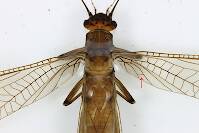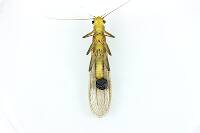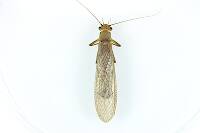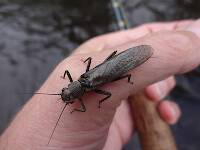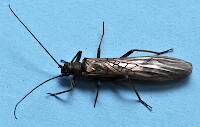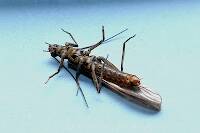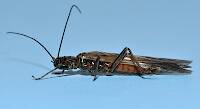
Blue-winged Olives
Baetis
Tiny Baetis mayflies are perhaps the most commonly encountered and imitated by anglers on all American trout streams due to their great abundance, widespread distribution, and trout-friendly emergence habits.
Featured on the forum

This specimen keys to the Epeorus albertae group of species. Of the five species in that group, the two known in Washington state are Epeorus albertae and Epeorus dulciana. Of the two, albertae has been collected in vastly more locations in Washington than dulciana, suggesting it is far more common. On that basis alone I'm tentatively putting this nymph in albertae, with the large caveat that there's no real information to rule out dulciana.

Troutnut is a project started in 2003 by salmonid ecologist Jason "Troutnut" Neuswanger to help anglers and
fly tyers unabashedly embrace the entomological side of the sport. Learn more about Troutnut or
support the project for an enhanced experience here.
Isidro
Posts: 24
Posts: 24
Isidro on May 4, 2008May 4th, 2008, 3:04 am EDT
Maybe stone flies will be more successful than the mayflies. I tried to find a key for European families of Plecoptera but I don't have found it. This one was photographed yesterday at Bádenas, Teruel, Aragon, NE Spain at 850 meters high, in a point of permanent quiet water very dirty and full of aquatic grasses and hedges (Typha, Scirpus etc), with lime soil and surrounded by cultivated fields. The stone fly sizes about 17 mm long (including wings, not including antennae), and have not cerci. I have the collected expemplar for see the venation or all these characters that you can need for helps me with the identification.
Here are a list of all Iberian Peninsula stoneflies.
http://www.fauna-iberica.mncn.csic.es/faunaib/arthropoda/insecta/plecoptera/index.php
And here is the bug.

Thanks in advance.
Isidro
Here are a list of all Iberian Peninsula stoneflies.
http://www.fauna-iberica.mncn.csic.es/faunaib/arthropoda/insecta/plecoptera/index.php
And here is the bug.

Thanks in advance.
Isidro
Isidro
Posts: 24
Posts: 24
Isidro on May 8, 2008May 8th, 2008, 11:52 am EDT
What a great success!!!
Well, looking in a book I see the venation very, very similar to Nemoura. I thinks that family Nemouridae is sure, then. But there are many, many (too many) species... so, it's impossible, only would be identified by distribution maybe...
Well, looking in a book I see the venation very, very similar to Nemoura. I thinks that family Nemouridae is sure, then. But there are many, many (too many) species... so, it's impossible, only would be identified by distribution maybe...
Quick Reply
Related Discussions
Topic
Replies
Last Reply
9
Jun 17, 2015
by Oldredbarn
by Oldredbarn
9
Jun 19, 2013
by Brookyman
by Brookyman
18
Jul 31, 2011
by Entoman
by Entoman
2
Mar 26, 2008
by Isidro
by Isidro
2
Sep 28, 2019
by Wbranch
by Wbranch


